Jet packs rule, say deep-sea astronauts
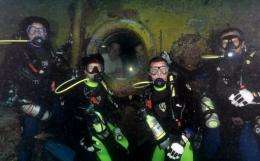
Battery-powered jet packs are definitely the best part of tooling around on the ocean floor in practice drills for an eventual visit to an asteroid, an international crew of astronauts said Monday.
The team is nearly midway through a 13-day trip to the ocean floor off the coast of Florida to see what it might be like to try to maneuver around an asteroid where there is little gravity and walking around is not an option.
"Most fun? Jet packs. Definitely jet packs," said a grinning Steve Squuyres, an expert on planetary exploration at Cornell University who is part of NASA's Extreme Environment Mission Operations (NEEMO).
The crew, which also includes astronauts from Japan, Canada and the United States, is working out of the Aquarius Underwater Laboratory, the only undersea lab of its kind in the world.
The ocean-floor outpost is located three miles (4.5 kilometers) off the coast of Key Largo, Florida, where it has provided lodging and life support systems for underwater scientists since 1993.
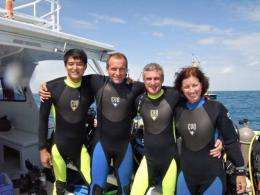
NASA has been sending astronauts to the undersea lab 62 feet (19 meters) down for weeks-long space training missions since 2001, but the latest effort is a new push to get ready for an asteroid trip that President Barack Obama has said could happen by 2025.
Canadian Space Agency astronaut David Saint-Jacques said the daily drills of moving around the seafloor as if it were the surface of an asteroid have been quite rigorous.
"This is a pretty good simulation, it is very similar to being in zero gravity," he told AFP in an interview.
"The issue with going to an asteroid is that there would be almost no gravity pull so you can't walk on it or land on it so we have to kind of hover around it or anchor to it.
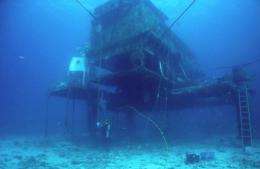
"The toughest part for me so far is when we are doing these mock space walks, stabilizing myself well enough to do the job," he added.
"I have never been to space but I am realizing that if you want to do some work, this is difficult."
The team is practicing using a long telescoping pole, called a boom, that has large magnets on each end. They fasten the magnet points to a spot on the surface, then unfasten it and slowly move it to the next point.
It makes for a cumbersome method of getting around, but a reliable way of staying in place in order to hammer at the surface and take a rock sample, said Squuyres.
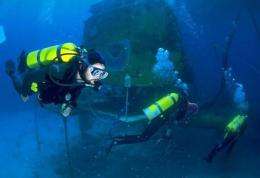
For faster transit from point A to B, the jet pack was a thrilling alternative. The only problem -- it was hard to stop.
"I have to confess, it was every bit as much fun as it sounds like it was. Quick, easy, and very cool. Problem was, once we arrived at our destination with a job to do, staying in place was a lot harder," Squuyres wrote in a blog post on the NASA website.
Given the load of new challenges the crew faces, it is tempting to use the benefits of drag in the water to their advantage, added Saint-Jacques.
"In the water you can cheat by swimming, and we have to be very disciplined and avoid doing that," he said.
Commander Shannon Walker, a NASA veteran who has lived aboard the International Space Station for six months, agreed that "the fun part is the jet packs."
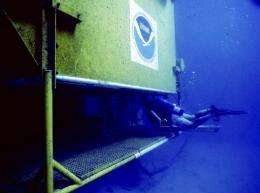
Even though a mission to an asteroid is far off, Walker said she hopes to be part of the team that makes it there. In the meantime, their deep-sea findings will be sent to NASA engineers who are focused on new destinations in space.
"We are looking at translation of technology -- how do we get it from here to there and how we might accomplish our work once we are there," she told AFP.
"I certainly hope that I get to go back into space, first to the space station and maybe on to an asteroid or the Moon or Mars or wherever we are going next," she said.
"We have got a lot of engineers who are working on getting us to other bodies so the information that we are collecting here will be passed on them and it will get folded into the equipment that they are building for the future."
JAXA astronaut Takuya Onishi said the most challenging part for him was working on the spacewalk tasks and at the same time trying to communicate with the English-speaking crew, due to the language barrier.
"It is really hard for me," he told AFP. "Also, I am used to a 1g environment so it is difficult to assimilate myself to being in microgravity."
(c) 2011 AFP


















